In my opinion, silly questions about all the birds of Africa do not exist! And there are a lot of fun facts on African birds that you might have wondered about but were afraid to ask.
While the African continent is synonymous with the idea of a Safari; a Swahili word that means a journey, and this is due to the rich biodiversity of both flora and fauna, African birds are often overlooked.
From coastlines, vast tropical rainforests, mountains, waterbodies, deserts, and Savannahs, Africa’s myriad of habitats are home to a diverse number of birds.
Some of these birds are native and endemic (can only be found in that place) to the continent and also have very special adaptions to their habitats and some to their feeding habits.
Below we will answer all of your “silly” questions about the birds of Africa, but are these 15 facts silly?
Updated 29/11/23
1. How many bird species are there in Africa?
The African continent has a recorded 2721 species of birds.
This also includes the Islands of Madagascar, Seychelles, Mauritius, Comoros, Cape Verde, The Canary Islands, Zanzibar, Sao Tome and Principe, and Annobon in the Gulf of Guinea.
Of these 2721 species of birds, 1400, which is about 51%, are endemic (these are birds that are native and can only be found in Africa) to the continent.
2. What is Africa’s largest bird but also the heaviest bird of Africa?
The ostrich is not only the largest bird in Africa but also in the world.
An adult ostrich may weigh as much as two adult humans, with their weights ranging from 63kg to 146kg.
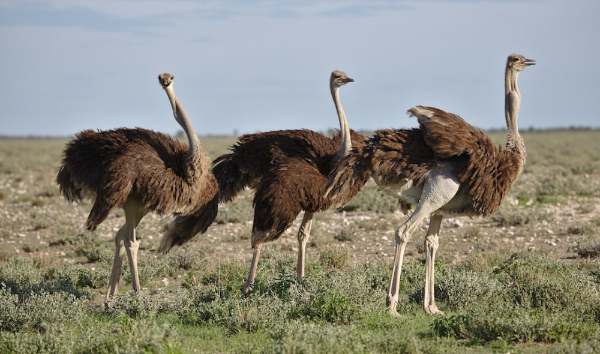
Males will even weigh more than females, typically weighing in excess of 156kg.
They are also really tall, with an adult male ranging from 2.1m to 2.8m ( 6ft10inch to 9ft2inch) and females ranging from 1.7m to 2m ( 5ft7inch to 6ft6inch), which is tall in comparison to the average human.
3. What is the smallest African bird?
When compared to the Ostrich, some of the smallest bird species in Africa look like insects.
The smallest bird in Africa is the Southern Penduline Tit at 8 to 9 cm (3 to 3.5in) in length.
This bird can only be found in the Southern part of the continent in countries such as South Africa, Namibia, Zimbabwe, Angola, and Botswana.
Their diet mainly consists of insects and larvae and you’ll find them foraging among leaves and in spider webs.
They generally prefer thorny trees and their nests are ingenuously built, such that there is a false chamber below the actual entrance to the nest.
The entrance also has a false septum that closes the entrance to the main chamber leaving only the false chamber and acting as a deterrent against nest predators.
4. What is the smallest bird of prey in Africa and in the world? The African Pygmy falcon!
The African Pygmy Falcon is quite a cute, courageous nest defender and fearless hunter at just the height of a sharpened pencil, so very small!
Their prey range from insects, rodents, lizards, and other smaller birds usually hunting from a perch and swooping down on their prey.
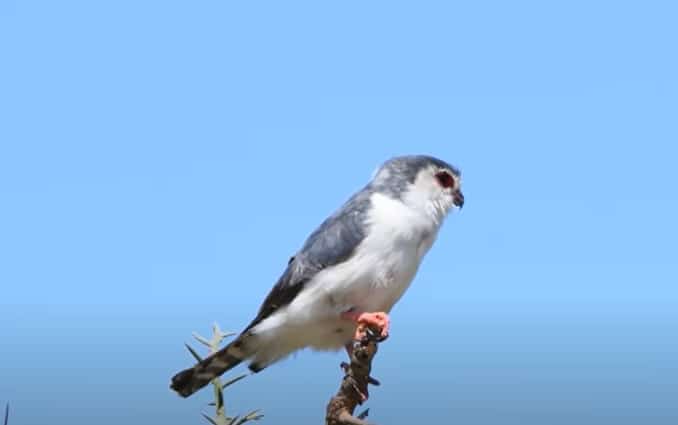
For their nests, these hunters take up living accommodations in already constructed social weaver nests.
The curious thing is that despite the social weaver being smaller than the Pygmy Falcon, they are largely left alone forming a symbiotic relationship as the Falcon will clear the area of nest predators such as snakes and rodents.
5. Which is the largest flying bird in Africa?
The Kori Bustard and in particular the male Kori Bustard is not only the heaviest bird capable of flight in Africa but also in the world.
Just like the Ostrich, the Kori Bustard is an impressive bird, with males reaching upwards of 19kg, while the females are usually twice as small.
As impressive as it is seeing the bird take flight with how heavy it can be, this weight has its weak points.

Being so heavy, Kori Bustards prefer spending most of their time on the ground, only flying when it’s necessary and for short flight durations and in sight of the launch area.
Their size gives them a presence and a multitude of predators from Leopards, Lions, Cheetahs, Hyenas, and Caracals.
6. What is the rarest bird in Africa?
2 different birds of Africa can be considered the rarest on the continent:
1. The Madagascar Porchard.
The rarest bird in Africa is from Madagascar; the Madagascar Porchard.
This bird was actually thought to have gone extinct in the late 90s but a chance spotting at Lake Matsaborimena in 2006, gave the species a chance at survival.
At the time of their rediscovery, there were only 20 adult members of the species left, but conservation efforts have allowed the birds to multiply to more than 100 birds as of 2022.
In 2018, a small percentage of the birds were released into the wild in a protected zone set up for their survival, and they continue to increase slowly.
The only location to find these birds is at Lake Matsaborimena and Lake Sofia in Madagascar.
2. The Taita Falcon
The other rare bird in Africa is a raptor; the Taita Falcon.
Unlike the Madagascar Porchard, the Taita Falcon is distributed in a wide geographical region from Ethiopia to South Africa, and with such an impressive distribution there are about 500-1000 adult birds alive.

One of the reasons for their rarity is their habit of occupying regions that are inaccessible or extremely remote and also because the birds are not easily seen or observed.
Because of the little ecological and biological info on these small raptors, tracking their survival is relatively hard, and sometimes they might decline more in some geographic areas relative to others.
7. What is the fastest bird in Africa?
1. On land: the ostrich is the fastest bird in Africa
On land, the ostrich is the fastest bird not only in Africa but in the world.
To put into context how fast the ostrich is, consider the greatest marathon runner in the World, Kenyan Eliud Kipchoge who runs at an average of 21.02 km/h (13 mph) which is quite fast.
Ostriches can run continuously for long stretches at an average speed of between 48-60 km/h, finishing a 42 km marathon in about 40 mins.
Usain Bolt the world’s fastest sprinter reaches an astonishing top speed of 43.99 km/h (27.33 mph), which is astonishing.
Ostriches on the other hand can reach a top speed of 70 km/h (43 mph). This is due to their powerful and long legs acting like springs, and are able to cover five meters in a single stride.
And they use their wings just like a plane to steer and change direction at high speeds.
2. The fastest bird in the air.
In the air, the African Crowned Eagle is the fastest bird.

When it goes into a swoop or a controlled dive, it reaches speeds of 160 km/h (100 mph), and the astonishing thing is that it comes to a complete halt in just 6 meters (20 ft).
8. Why do flamingos stand on one leg?
Flamingos can be seen standing on one leg for long periods of time, but why are they doing that?
The main reason is to avoid muscle fatigue, as it is an activity that saves energy.
On one leg flamingos are more stable than on two legs, because sleeping on two legs, they have to constantly maintain balance.
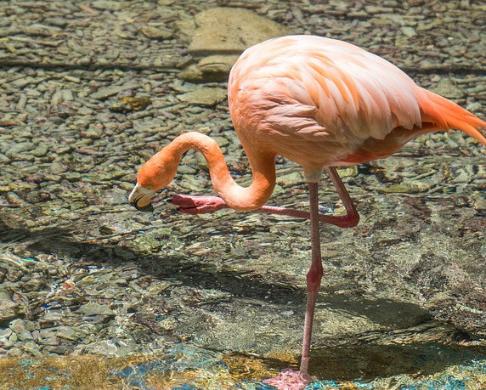
Flamingos have the ability to lock the tendons and ligaments in the legs in place, which reduces the amount of energy required to stay in one place.
Thus for sleeping or resting for long periods of time, Flamingos will do that standing on one leg.
Are flamingos always standing on the same leg?
The answer to this question is no: flamingos spend about the same amount of time on the left leg as well as the right leg, which can be for hours!
9. What is the ugliest bird in Africa?
This title might be split between two birds the Marabou Stork or the Shoebill.
Also, it’s not just about the looks, but their behavior is quite peculiar as well, read why!
- The Marabou Stork is also known as the undertaker bird and is a scavenger playing an important clean-up operation in their ecosystems.
From the back, the wing feathers look like a cloak, coupled with its sharp beak, and throat guilar giving the bird a sinister look.
They love carcasses, insects, human feces and refuse, small rodents, and small birds.

- The shoebill stork is a large stalk-like, prehistoric-looking bird with an oversized beak that looks shaped like a shoe.
Just like the Marabou Stork, they defecate on themselves to aid in body thermoregulation.

10. Which bird is only found in Africa?
Well, what do you think the answer to this question is?
The world-famous Ostrich, of course!
11. Does Africa have ducks?
This might sound like a “silly” question indeed, but people do ask it on Google, so here’s the answer 😉
So yes, Africa does have a lot of duck species, but we are not diving deeper into this today.
The most know species of duck in Africa however is the African black duck.
12. Which birds of Africa have peculiar mating behavior?
African Jacanas have a peculiar and unusual mating system!
They have polyandrous relationships, which means that a female can mate with multiple males, while the male “stays at home for the kids” 🙂
This can be done by just the male because birds lay eggs (yeah deu), and thus can be incubated by either parent, male or female.
This system where females are forming harems of males is very unusual in the animal world, as it is mostly the other way around.
African Jacanes’ habitat is throughout sub-Saharan Africa, and they are also known as “Jesus birds” because of their ability to walk on water, yes!
Well, they actually give that impression to walk on water, because they actually walk on floating vegetation 😉
13. Which African birds are the most clever?
Not only is the African Grey Parrot the most clever bird in Africa, but actually considered among the most clever animals on the entire planet.
To say that these birds are intelligent would be an understatement, did you know that they can have a vocabulary of up to 1000 words or more and that they can learn to talk?

The most common and popular African Grey Parrot is the Congo African Grey.
This latter is the largest of the African Gray Parrots, with a lighter gray plumage and a black beak.
The second most common type is the Timneh African Gray, which got recognized as a separate species in 2012. This one is slightly smaller than the Congo Gray and its feathers are darker.
14. Which African male bird makes its nest and not the females?
That would be the very intriguing African weaver bird!
Female Weaver birds leave the building of the nest up to the male Weavers, and by deciding which nest is best built by the males, they will choose the latter as a mating partner!
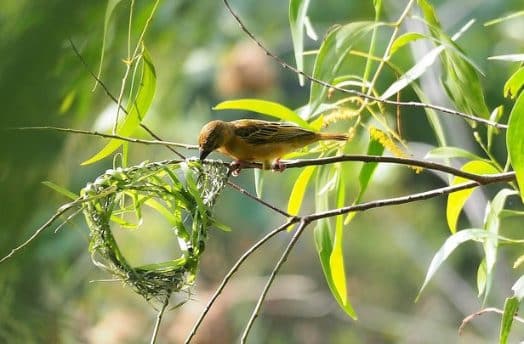
This way, they make sure to not only get the coziest house, but the females make sure that the best genetics will be passed on to the next generation!
15. Which birds of Africa are the most abundant?
Found in Sub-Sahara Africa, the red-billed Quelea is the most common wild exotic bird.
It is estimated that there are about 1,5 billion red queleas on the planet.
They live in large social groups forming very large swarms, so much that they appear to be clouds of smoke when seen at a distance.

The disadvantage for humans is that they can severely damage crops.
Are you thinking about buying binoculars to have a good look at all the magnificent birds of Africa?
Related article:
My Final Conclusion.
I hope that you enjoyed this blog post on 15 fun facts about the most common birds of Africa.
If you have any more questions, please feel free to ask them below in the comment section or join me on one of my social media channels and share your pictures in my Facebook group!
I wish you happy travels!
Kind regards,
Lizzy
I now have a YouTube channel as well!
YouTube
Hello Africa travellers!
Who am I? Well, the least you can say is that I am quite crazy about Africa, its nature, its climate, its culture, and more.
As a young woman in my twenties, I had already traveled to several African countries by traveling along in an overlander on my own and mostly camping ( or glamping ) and just fell in love with the diversity of it all.
So much, so that at the age of 26, I went back to university to study biology, which, unfortunately, I couldn’t finish because of health reasons (yes, I got sick from a tropical disease, oh cynicism). But this did not stop my dream of traveling back to Africa several times, and I still do.
My dream was back then to leave Europe and go study animal behavior, especially the elephants (sure, that’s every girl’s dream haha), but I am also very much intrigued by hyenas and other “ugly African animals“.
So, I “kind of” have a little bit of a scientific approach to my articles, when I write about African birds, for example. And most of all: the passion.
But life goes on, you move from one side of the country to the other, you get sick again and top it off with lower back problems, and before you know it, you are over 50 hahaha!
Now, I still travel to Africa, but take it a bit “easier” than the good old camping days, and stay in comfortable, yet affordable accommodations, together with my husband Wouter.
These are some of the countries I have traveled to: Kenya, Tanzania, Zanzibar, Malawi, Zambia, Zimbabwe, South Africa, Namibia, Botswana, Tunisia, and a little bit of Lesotho LOL .
While clearly not being African territory, but Spanish, I also visited Gran Canaria and Tenerife, and location-wise, I consider them “African”, because of their climate and nature, sue me :-p
The last trip I took was to South Africa in the year 2023, and it sure got the fevers for Africa back! From the Barberton mountains to the Drakensberg and the Southcoast, one month wasn’t enough at all to see the whole country, so we’ll be back! At ease and with a little bit more luxury than in my younger days haha!
I wish you happy travels!
Kind regards
Lizzy



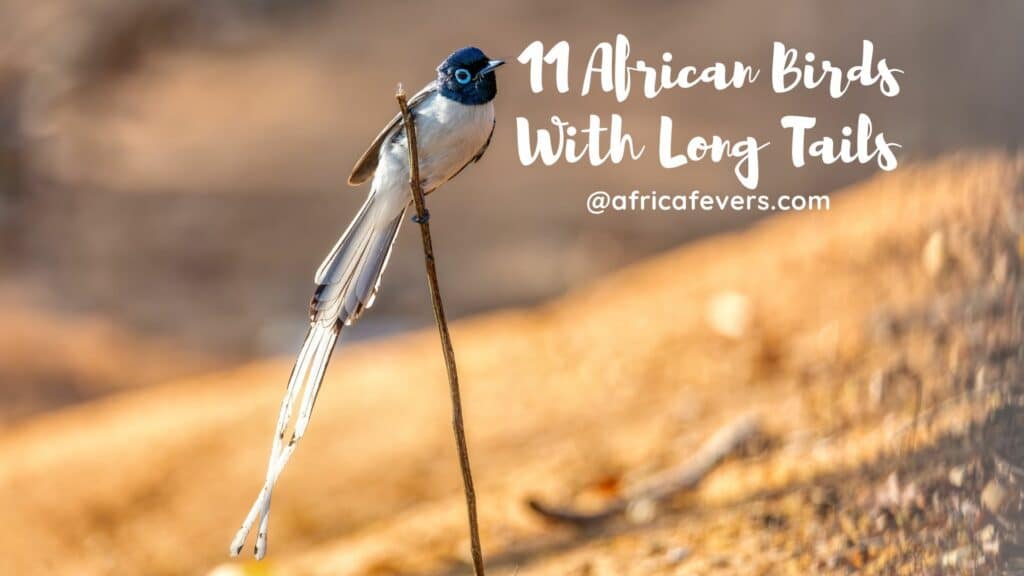
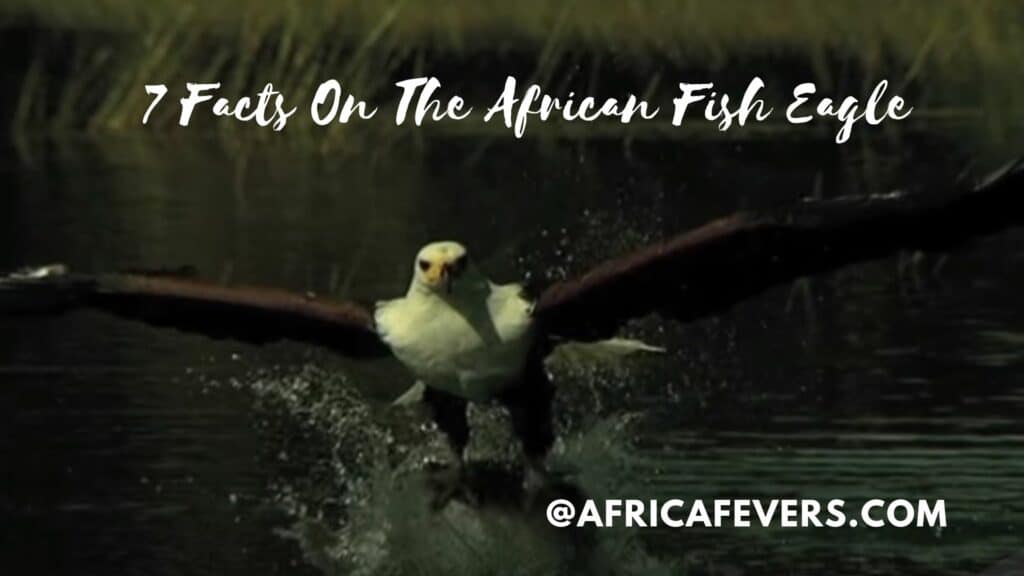
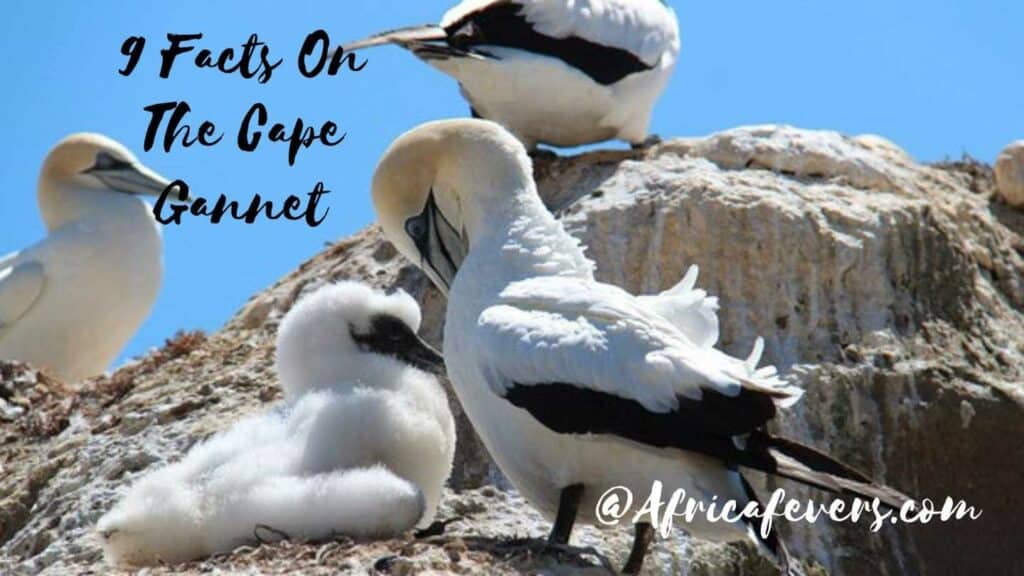





Wow, what an informative post!
If I didn’t learn anything today, I’d say that the statement was false, and that I learned about African birds!
As an example, while reading and learning your page, I also used it as a school setting, in teaching my children about different birds in Africa.
This would be a great option for you to implement onto your webpage in my opinion, however, small doses of information are just as good.
My most intriguing learning facts today from your site – Flamingos and their legs, and the Parrots. I knew parrots were smart, i didn’t know it was the African grey parrot.
Thanks for this.
Hi Jeremy and thank you!
About your remark on teaching kids about (African) birds, this is exactly what I am going to write about soon! Bit first coming up, are the wild exotic birds of the African jungle;-)
I’m happy that you found this informative!
Kind regards,
Lizzy
Birds are fascinating creatures and play a very important role in the ecosystems they inhabit. African birds are no exception and are a vital part of the continent’s rich biodiversity. I enjoyed reading this post and learning about some of the interesting facts and adaptations of African birds. Thank you for sharing!
Hello Reppin!
Thank you very much for your supportive comment and I wish you happy travels!
Kind regards,
Lizzy